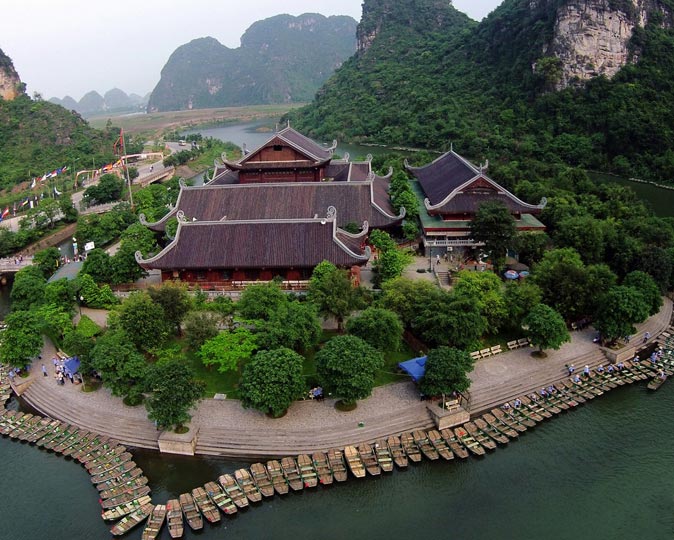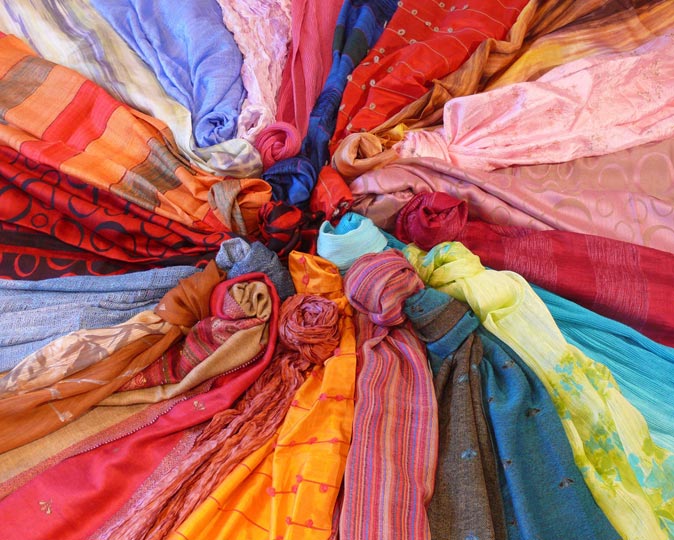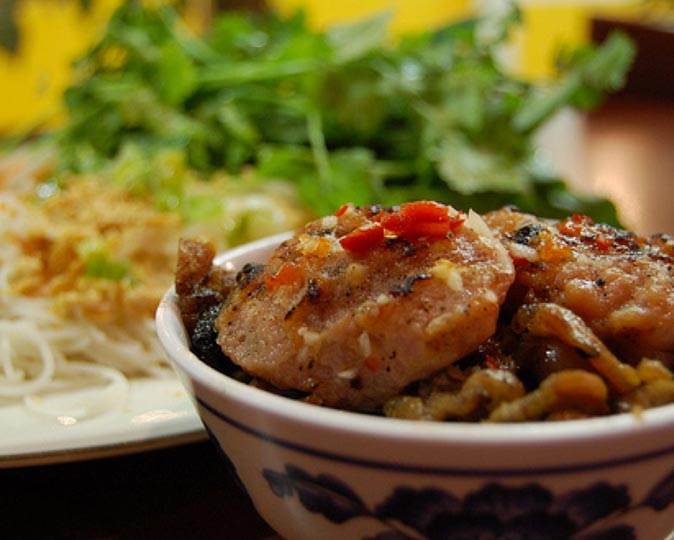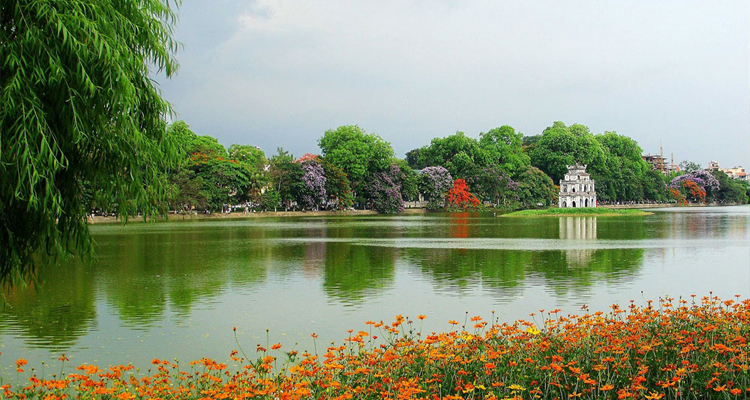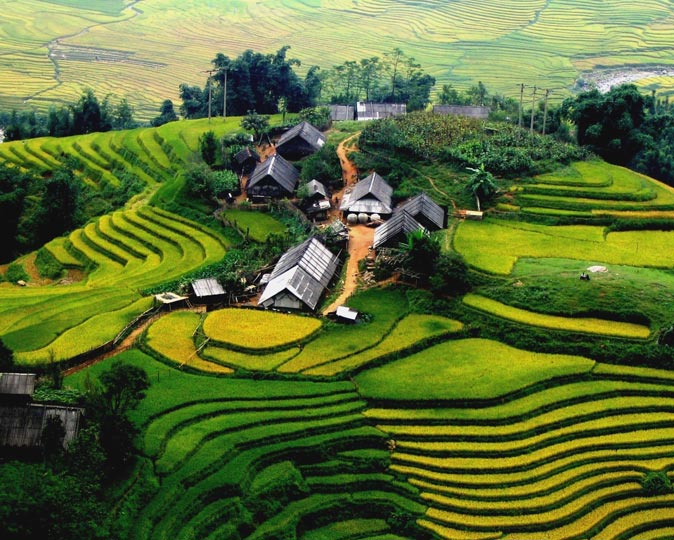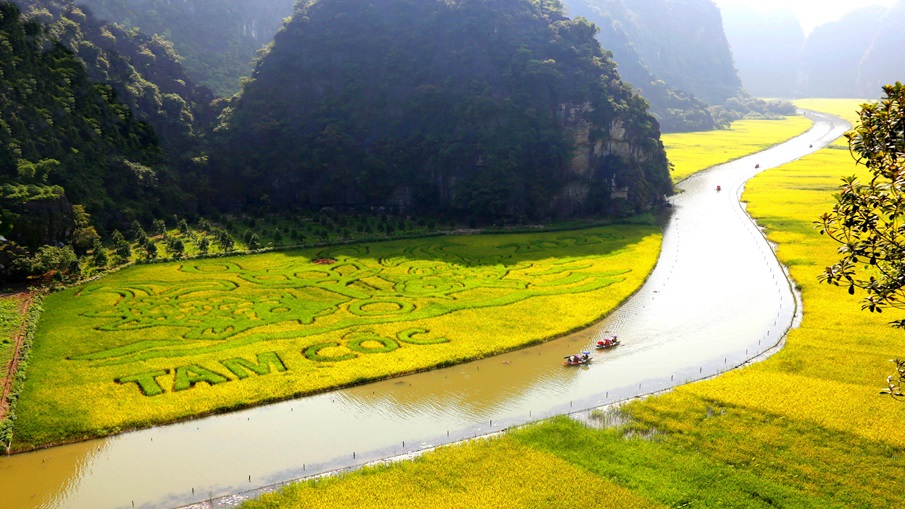Itinerary
Tay Phuong Pagoda:
Tay Phuong pagoda was built in the 8th century and has been restored several times since. In 1632, the pagoda was rebuilt according to the Sino-Vietnamese character Tam (three), featuring three sections: the upper sanctuary, back palace, and lobby rooms.
After climbing 239 stone steps bearing the signs of the passage of time and sheltered by the shade of age-old trees one reaches a gate. The gate carries the name of the structure: Tay Phuong Co Tu (Ancient Pagoda of the West). According to the inscription on a 17th century stone stele it also has two other names: Sung Phuc Tu and Hoang Son Thieu Lam Tu.
Thay Pagoda:
The Thay Pagoda was built in the 11th century following the Sino-Vietnamese character Tam. Therefore the pagoda consists of 3 sections.
The outer section is the place for the ceremonies and offerings. It is called the Ha Pagoda. The second section is the place for praying to Buddha. It is called the Trung Pagoda. The third section is devoted to the Priest Tu Dao Hanh. It is called the Thuong pagoda.
Van Phuc Silk Village:
Just 15km to the west of Ha Noi is a place renowned over centuries for its silk-making and silk products – Van Phuc village in Ha Dong of Ha Tay Province.
In recent years, the village has enjoyed the revival of its craft due to a surging demand for silk in both the domestic and foreign markets.
It has long been a universal byword of luxury, often worn by the world’s richest, most powerful citizens, nowadays, the fine and lustrous cloth that originally comes from the cocoon of the silkworm is much more affordable for "ordinary" folk.
Silk is currently enjoying a fashion renaissance, particularly as its many varieties can be made into a wide range of designs suitable for all facets of modern life.
The Hanoi's special charm is also found in its traditional pagodas and temples, along narrow streets filled with vendors and beside quiet, reflecting tranquil lakes.
- 8:30am. Pick up at your hotel in Hanoi, spend a full day to discover Hanoi’s surrounding area and visit Thay & Tay Phuong Pagodas to learn about Viet traditional architecture style, Vietnam Buddhism religion & daily life of local people outside city of Hanoi.
- 12:00pm, lunch at a local restaurant.
- 1:00pm discover full afternoon in the silk village of Van Phuc. Taking photos & shopping there until 4:00pm. Leaving Van Phuc Silk Village to hotel. Arrive hotel at
- 4:30pm. Finish the unforgettable trip at your hotel in Hanoi.
Tour Cost included:
- Meals as mentioned in the itineraries: Vietnamese food, Asian Food basic.
- Private transfers within the tour by air-conditioned vehicle, including pick-up and drop-off at hotel.
- English Speaking Tour guide. Other languages on request
- All entrance and sightseeing fees
- All taxes & services charge.
Tour Cost Non Included:
- Beverages and other meals do not indicate in the program.
- Travel insurance
- Personal expenses
- Tipping/ Gratuities
- Any additional expenses caused by reasons beyond our control such as natural calamities (typhoon, floods), flight delays, rescheduling or cancellations, any accidents, medical evacuations, riots, strikes etc.
| Number in Group |
Price per person in US$ in party of
|
|||||
| 1 | 2-3 | 4-6 | 7-10 | 11-15 | 16-20 | |
| Price | 117 | 75 | 65 | 54 | 47 | 42 |
 Gallery
Gallery
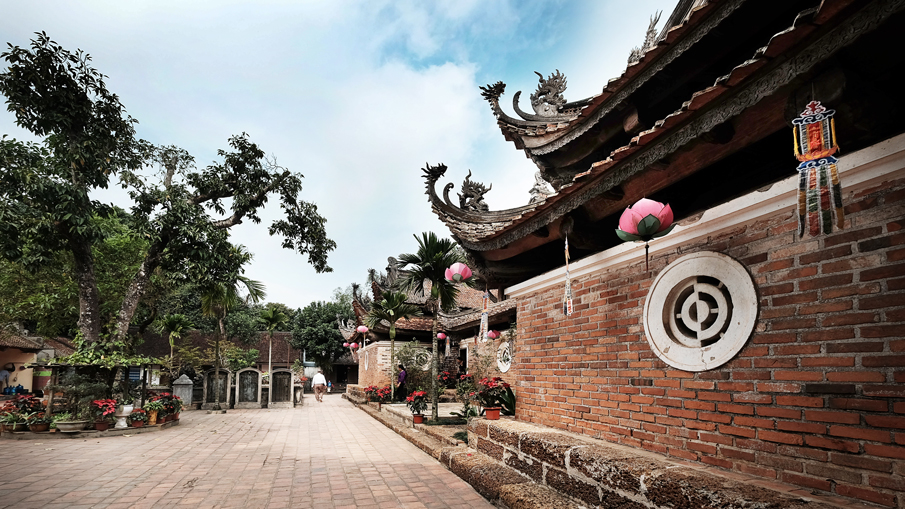
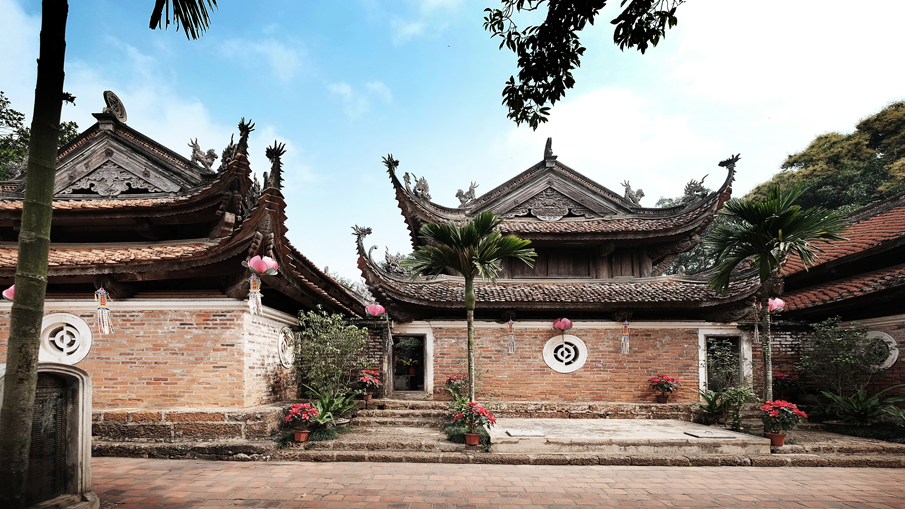
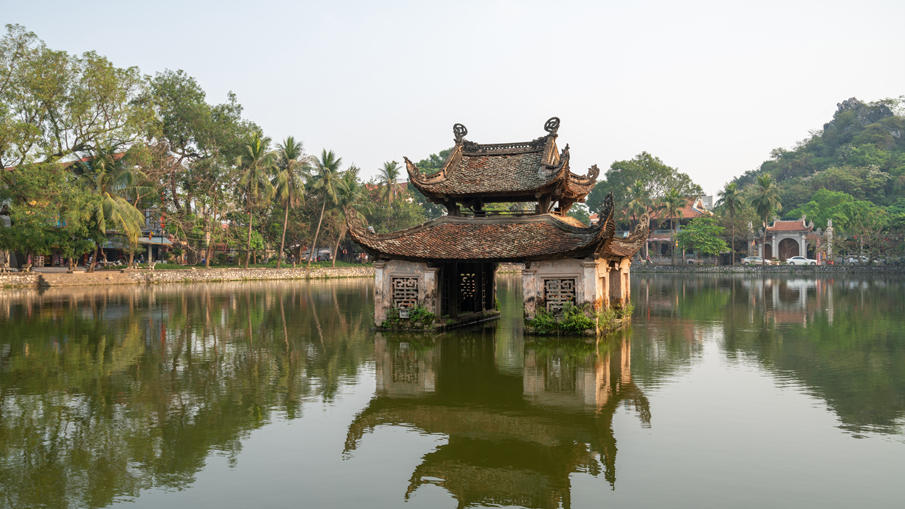
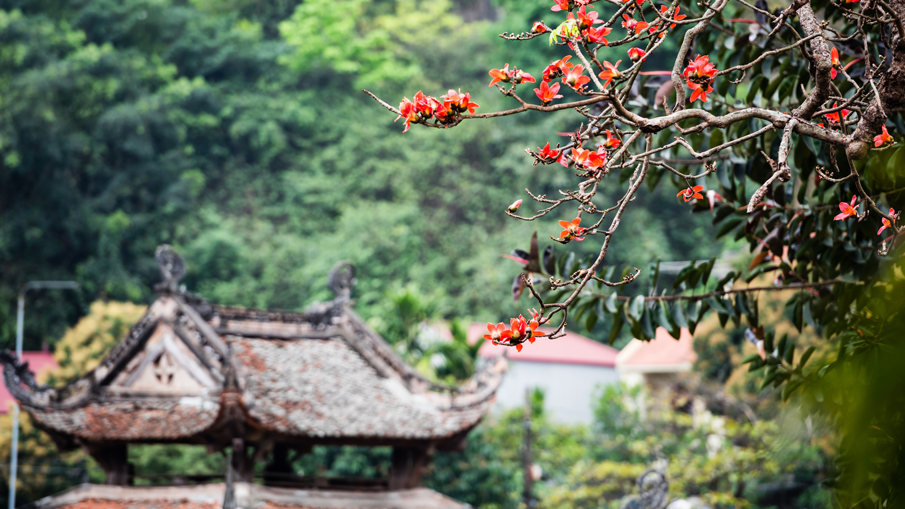
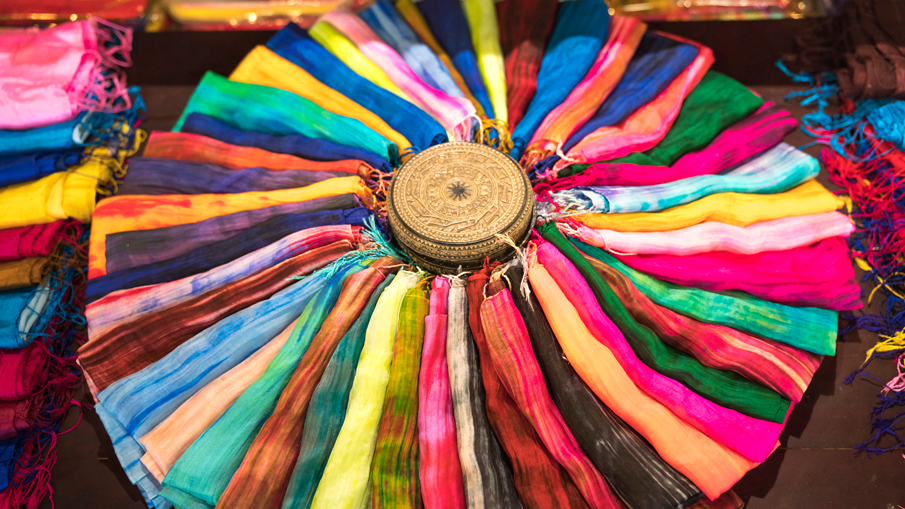


Other Tours
Hoa Lu Tam Coc Tour - full day
Hoa Lu: the remains are the temples dedicated to King Dinh and King Le, the two heroes who lived in 10th century and chose Hoa Lu to build the citadel of the capital city ( from 968 to 1009) Tam Coc: means three caves -....
Duong Lam - Viet Ancient Village Tour - full day
A journey to Duong Lam village is a trip to trace back the origin of Vietnam's culture and Vietnam's traditions. This is also the great chance explore architecture of ancient houses while wander along its narrow....
Hoa Lu - Trang An Grottoes Tour - full day
HOA LU: the remains are the temples dedicated to King Dinh and King Le, the two heroes who lived in 10th century and chose Hoa Lu to build the citadel of the capital city (from 968 to 1009).
Perfume Pagoda Tour full Day
Chua Huong (Perfume pagoda) is located in Huong son (Perfume mountain) 70 km southwest of Hanoi. Chua Huong is not one temple but a cluster of temples and shrines in the general vicinity of Huong son.
Bat Trang Ceramic Village - Van Phuc Silk Village Tour - full day
Just 15km to the west of Ha Noi is a place renowned over centuries for its silk-making and silk products - Van Phuc village in Ha Dong of former Ha Tay Province (Hanoi now) In recent years, the village has enjoyed the r....
Street Food Tour (recommended)
Vietnamese Street Food is one of dishes you have to eat when you go to Vietnam. A trip to this country is not complete without tasting the street food
FULL DAY HANOI CITY TOUR
Charming pagodas and the “36 streets and 36 wares” of the fascinating Old Quarter will vie for your attention. And there are other famous sights: the impressive Ho Chi Minh Mausoleum, the ancient Temple of L....
Mai Chau Hill Tribe Village - Full Day
Mai Chau is located in Hoa Binh province, approximately 135km (about 83 miles) from Hanoi and 60km (37 miles) from Hoa Binh. Mai Chau is well known for its natural beauty. The valley is home to many ethnic minorities, i....


